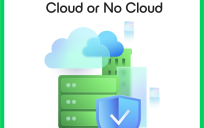Exit first, get in second. Either I’m talking about some parallel universe or the steps to consider when entering the cloud that were discussed in yesterday’s online training, Tips for Managing Your Hybrid Cloud Environment. Expert panelists Chuck Aaron, PMP, Deputy CIO for IT Services and Operations at the Federal Communications Commission (FCC), and Adam Clater, Director of Cloud Strategy and Solution Architect Manager for US Civilian and National Security Programs at Red Hat, shared how deploying an effective hybrid cloud environment are both the customers’ hybrid cloud wish-list and a consumable project.
What is a hybrid cloud?
In simple terms, a hybrid environment is when an organization manages in-house resources with an external or public cloud. In that parallel universe I mentioned earlier, all organizations could leverage the possibility of leasing instead of buying equipment or using shared data centers, because when agencies like the FCC are still holding their data centers together with “chewing gum”(as Chuck Aaron mentioned), capital investments are cost prohibitive.
When searching for a service provider, you want your cloud to deliver under any circumstance. Aaron highlighted that a hybrid cloud deployment should address configuration management, change control, security, fault management and budgeting. But where do you start? Or better yet, where do you exit? Since a hybrid cloud knits together public and private data center standards, deploying from either of these starting points is possible. But when moving to a new provider, organizations must consider how are they going to get the most out of their cloud arrangement. Here are the main questions to consider when you want to leave the data center business and move to the cloud (the shift in enterprise IT that many agencies are performing):
- How long will it take?
- How proprietary is this cloud?
- How much will it cost?
Other questions involve how to move the already-designed application and infrastructure smoothly to another provider (an opportunity for a lock-in), which workloads are most appropriate to run within a cloud provider, is it non-operation system specific, and most importantly, how do I get my data out? Find out the answers by viewing the on-demand version of the training here.
Open Source Ready:
Agencies considering hybrid clouds are often discouraged by the multi-vendor complexity. This is in addition to user concerns about data security policies, upgrade guarantees, and trust. Companies like Red Hat provide the interoperability to use a range of solutions from multiple providers, and they do this in a community of industry experts just like you and me. Open source communities are aware of the power of innovation that is being harnessed at this time and Red Hat not only leads the communities that create open source software, but also contributes to their projects and connects them to the customers that use it.
So what if you’re still not ready to move to the cloud or don’t want to do it on your own? Clater introduced Openshift, a platform as a service (PaaS) by Red Hat that generates great adoption from customers by tracking what is learned online in their On-premise private PaaS and implementing it into their Public PaaS Service. Not only does this platform let you accelerate app delivery, it’s multi-language, auto-scaling, self-service, open source, enterprise-grade, and secure.
Products similar to Openshift that are being built from the open source community is driving the IT industry in a great direction, a refresher for Red Hat, who has been open all along. To learn more about Red Hat’s cloud portfolio, view the on-demand version of the training here.






Leave a Reply
You must be logged in to post a comment.